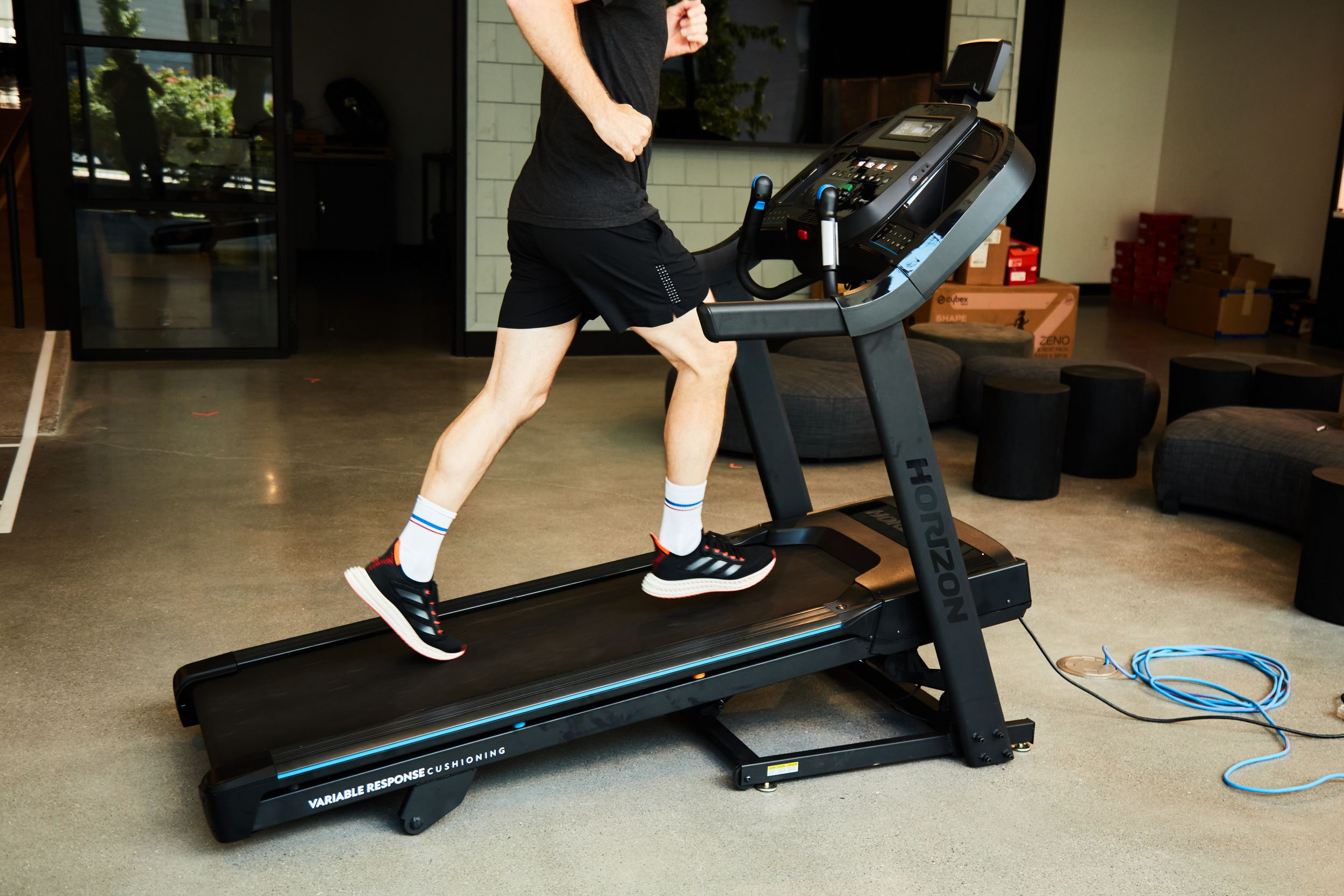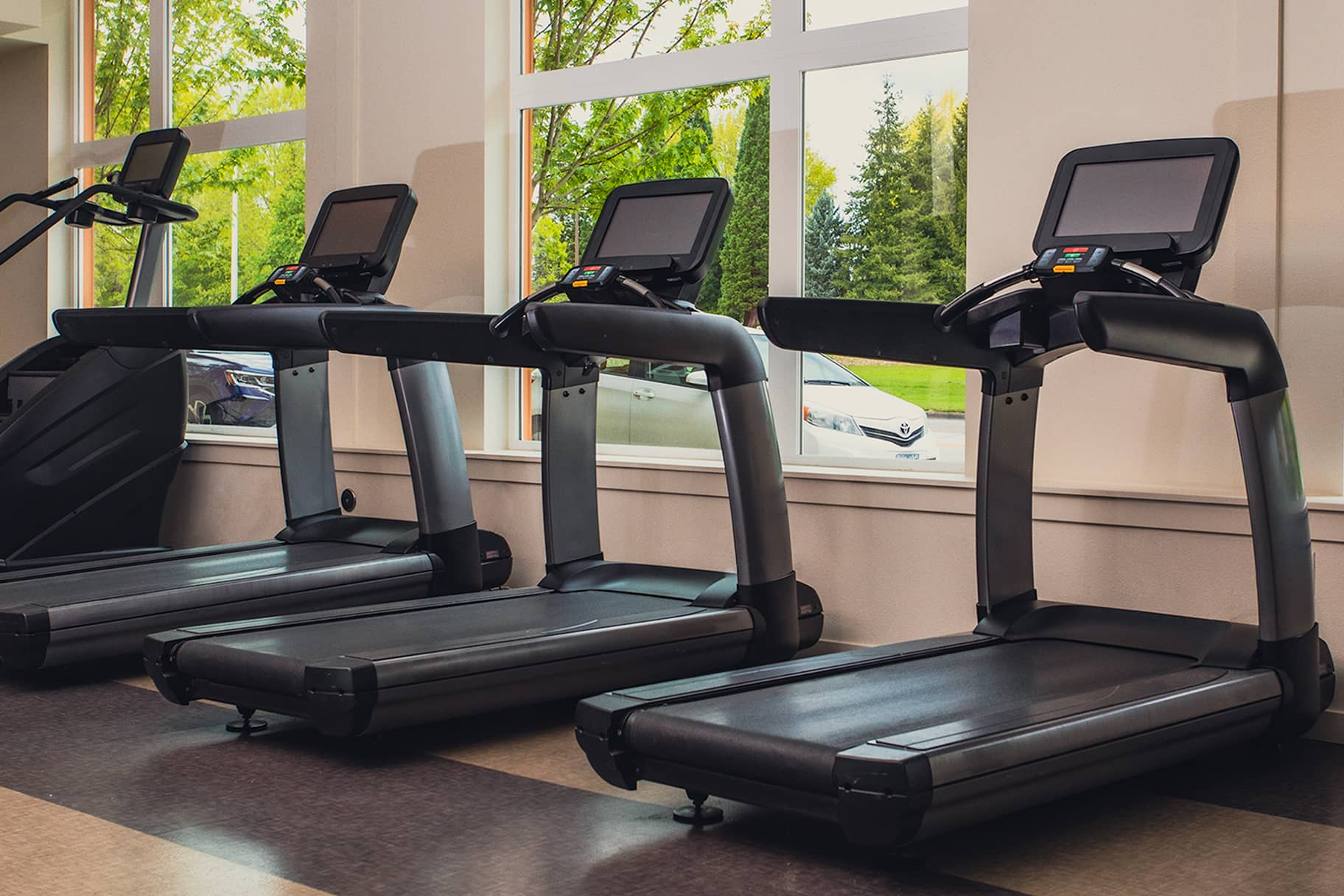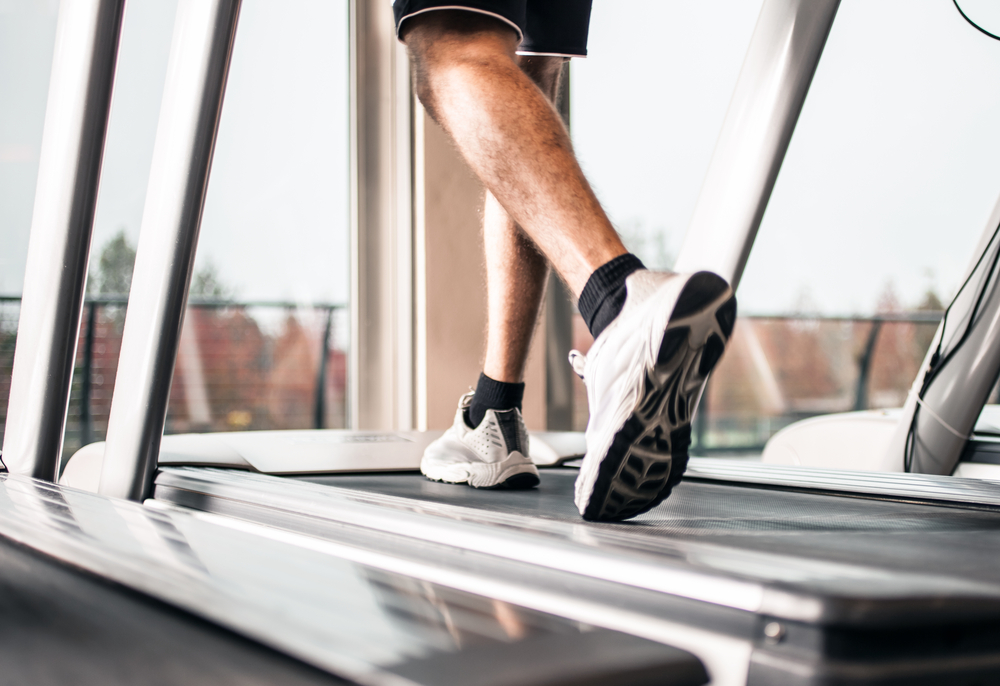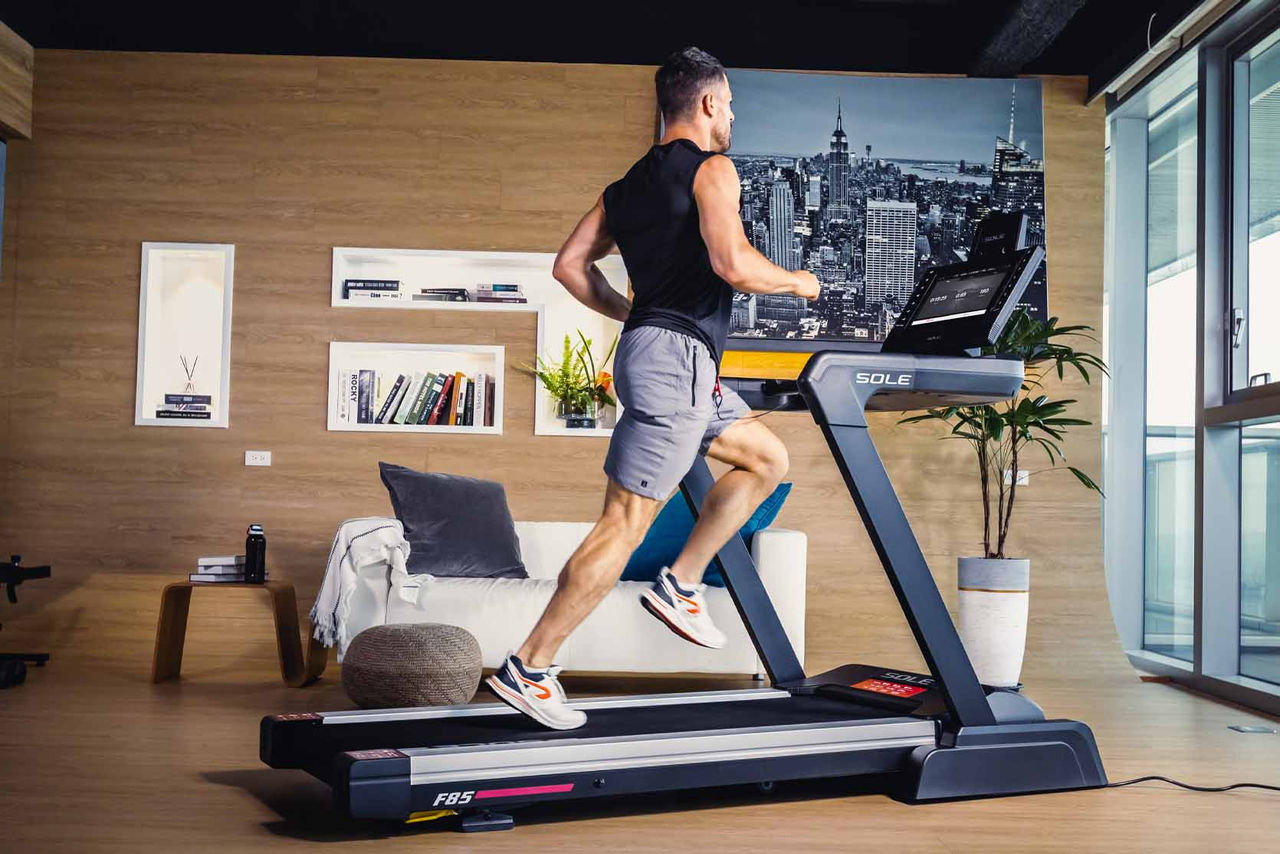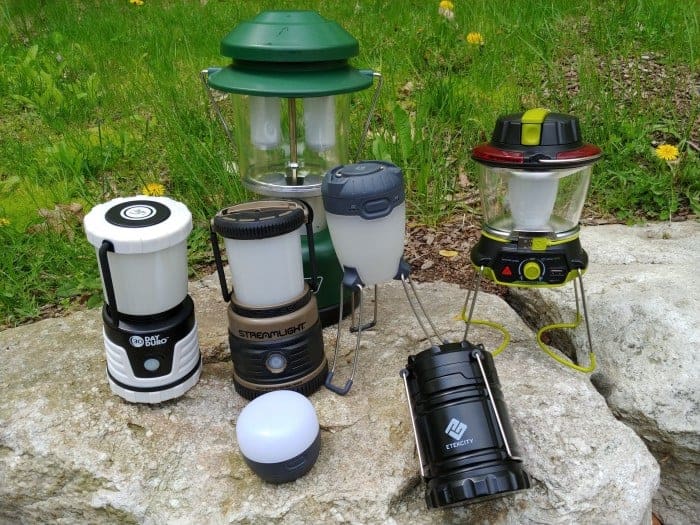In our quest for a healthier lifestyle, treadmills have become popular for indoor exercise and home gym equipment. However, it’s essential to understand the electricity consumption associated with these fitness machines. As a fitness enthusiast, you may ask yourself how much electricity the treadmill uses.
Exploring the elements affecting a treadmill’s power usage helps users make better decisions about energy usage, maximize workout benefits, and ensure environmental sustainability.
This article examines the power determination components of fitness equipment before presenting energy efficiency solutions for anyone who wants to preserve health benefits. This guide will reveal principles for treadmill power usage that will enhance your fitness experience significantly.
How Does Treadmill Work?
Image Credits: runnersworld.com
The treadmill moves its conveyor belt or running surface through the power of an electric motor. The strength of a motor forms the basis for achieving peak speed and elevation levels. The operation of treadmills happens through controls located in their front section, which allows users to modify speed settings and incline adjustments.
Safety keys and emergency stop buttons protect users during treadmill usage. Modern treadmill designs incorporate sensors that track heart rate while measuring distance and counting burned calories, as well as speeds and time. Models with folding features make treadmills easy to store in smaller rooms.
How Much Electricity Does Treadmill Use?
Image Credits: livestrong.com
The electricity consumption of a treadmill can vary depending on several factors. These factors include the motor size, usage intensity, duration of use, additional features, and the specific model of the treadmill.
The standard measurement of treadmill power consumption uses watts (W) and kilowatts (kW). Treadmill manufacturer user guides and product specifications contain information regarding treadmills’ power needs.
Energy consumption of a treadmill is obtained by multiplying the wattage rating with the usage duration in hours. The daily energy usage of any treadmill can be calculated by multiplying its wattage rating by the daily usage time as seen by 500W x 2 hours = 1000 watt-hours (Wh) or 1 kilowatt-hour (kWh).
These estimates serve only as preliminary calculations since energy use depends on several factors, including user weight, workout pace and intensity, and selected incline settings. Certain treadmill models include advanced energy-saving capabilities and operational modes, which lead to lower total energy consumption.
Calculating Treadmill Power Consumption
Image Credits: nike.com
To estimate the average electricity consumption of a treadmill, you can refer to the user manual or the manufacturer’s specifications. Most treadmills provide information about their power requirements, including the wattage or amperage ratings. To calculate the energy your treadmill consumes, multiply the wattage rating by the number of hours the treadmill is used.
For example, if a treadmill has a wattage rating of 500 watts and is used for two hours per day, the daily energy consumption would be 500 watts × 2 hours = 1000 watt-hours (Wh) or 1 kilowatt-hour (kWh). This calculation can also estimate monthly or annual electricity usage by multiplying the number given in kilowatt-hours by the average electricity rate in your area.
Factors that Influence Treadmill’s Power Consumption
Image Credits: electricrate.com
1. Motor Size and Horsepower
The treadmill motor is the heart of a treadmill and plays a crucial role in determining its power consumption. Treadmill motors typically range from 1.5 to 4.0 horsepower (HP). A higher horsepower motor generally consumes more electricity, especially when running at higher speeds or supporting heavier user weights.
Treadmills designed for walking exercises often have lower motor capacity than those meant for running or severe training. Moreover, a treadmill’s ability to sustain quicker speeds for longer periods increases with increased horsepower.
2. Usage Intensity
The power consumption of a treadmill largely depends on how it is used. Higher speeds and steeper inclines require more energy to operate the motor. Intense workouts with frequent speed or incline changes increase power consumption more than steady-state walking or jogging.
3. Duration of Use
The length of time the treadmill is in operation also affects electricity costs. Longer workout sessions will consume more power than shorter ones. It is important to note that treadmills consume electricity even when not used if left plugged in, as they often have standby modes or display features that draw a small amount of power.
4. Additional Features
Treadmills include built-in screens, fans, heart rate monitoring, calorie counter speakers, and programmable workouts. These features may increase the power consumption of the treadmill, as they require electricity to operate. Using these features during workouts will contribute to overall energy usage.
5. User’s Weight
Each machine has a maximum user weight, and the treadmill is not exceptional. How much power it uses is affected by how heavy the user is. The weight of the user has an impact on how much electricity is used. Because the equipment has to work harder to maintain the pace you’re utilizing, the heavier you are, the more electricity the equipment uses.
Energy Saving Tips to Reduce Treadmill Electricity Consumption
Image Credits: studiogrowth.com
If you’re looking to save the electricity bill when using your treadmill and make your workouts more energy-efficient, here are some helpful tips:
- Opt for Energy-Efficient Treadmills: Look for energy-saving features like sleep mode, automatic shut-off, or power-saving options.
- Use Pre-set Programs: Take advantage of the pre-set workout programs available on your treadmill. These programs are often designed to optimize energy usage by adjusting speed and incline settings based on a specific workout goal.
- Adjust Speed and Incline: Lowering the speed and minimizing the incline settings on your treadmill can help reduce power consumption. Start with lower settings and gradually increase them as needed to balance energy efficiency and your workout intensity.
- Shorten Workout Duration: If feasible, consider reducing the duration of your treadmill sessions. While maintaining an effective workout, shorter sessions can help lower overall electricity usage.
- Unplug when Not in Use: When your treadmill is not in use, unplug it from the power source. Some treadmills continue to draw a small amount of power, even in standby mode. Unplugging eliminates any standby power consumption.
- Utilize Manual Mode: If your treadmill has a manual mode, consider using it instead of pre-set programs. In manual mode, you have full control over the speed and incline settings, allowing you to make conscious adjustments to minimize power consumption.
- Maintain Proper Treadmill Care: Regularly clean and lubricate the treadmill to ensure smooth operation. Regular maintenance helps prevent unnecessary friction, leading to increased power consumption.
- Consider Alternative Power Sources: If available and practical, you may explore using alternative energy sources, such as solar panels or a renewable energy grid, to power your treadmill.
- Consider Manual Treadmill: If you plan to buy a treadmill and want to cut the electricity cost, consider manual treadmill options. These won’t affect your electricity bill, and you will only need batteries to power the monitor.
Frequently Asked Questions
1. How much electricity does a treadmill consume on average?
The average treadmill wattage is 600 to 700 watts of power each hour. However, the power usage may differ based on the treadmill’s particular type, the user’s body weight, workout intensity, speed, incline settings, and motor size.
2. Do treadmills continue to use electricity when not in use?
Some treadmills consume a small amount of electricity even when not in use, especially in standby mode. To minimize standby power consumption, consider unplugging the treadmill when not in use.
3. Are there any energy-saving features available on treadmills?
Treadmills feature various energy-saving technologies that manufacturers include in their products. It is possible to find energy-saving features on treadmills through their sleep mode capabilities alongside automatic shutdown functions during inactivity. Your treadmill’s specifications and user manual indicate whether it contains energy-saving features and instructions on its activation.
4. Are there any specific maintenance practices that can help optimize treadmill energy efficiency?
Correct equipment maintenance improves energy efficiency levels. Treadmill performance stays optimal when regular cleaning and lubrication are performed, which reduces mechanical forces and lowers power requirements. Proper maintenance according to manufacturer guidelines ensures that your treadmill’s energy efficiency remains steady.
5. Do treadmills continue to use electricity when not in use?
Power consumption while an inactive treadmill remains low but increases most during standby mode operation. When your treadmill remains idle, it is best to unplug it to reduce standby power consumption.
6. Are there any energy-saving features available on treadmills?
Several treadmill models include built-in energy-saving functionalities. Treadmills often have several key energy-saving features, such as sleep mode, automatic power-offs triggered by timed inactivity, and power-saving capabilities. Examine your treadmill’s specifications or user manual to identify existing energy-saving features before learning how to activate them.
Conclusion How Much Electricity Does Treadmill Use
Image Credits: dickssportinggoods.com
Awareness of treadmill electricity use combined with power-saving practices improves workout efficiency and sustainability. Correctly setting motor size, speed, and incline controls and using energy-saving tools can lower electricity costs while decreasing your treadmill’s power consumption.
Using treadmills for indoor exercise allows you to create a workout area, yet you must maintain both power efficiency and your fitness targets. Your ability to select effective choices and exercise treadmill optimization strategies will lower your power consumption and let you achieve optimal health results from your activity.
For thorough power requirements and energy-saving feature information, consult your manufacturer’s specifications alongside the user manual for your treadmill model. Making a deliberate effort to conserve energy will allow you to work out on your treadmill efficiently and sustainably.


